How to master the art of yin yoga for beginners
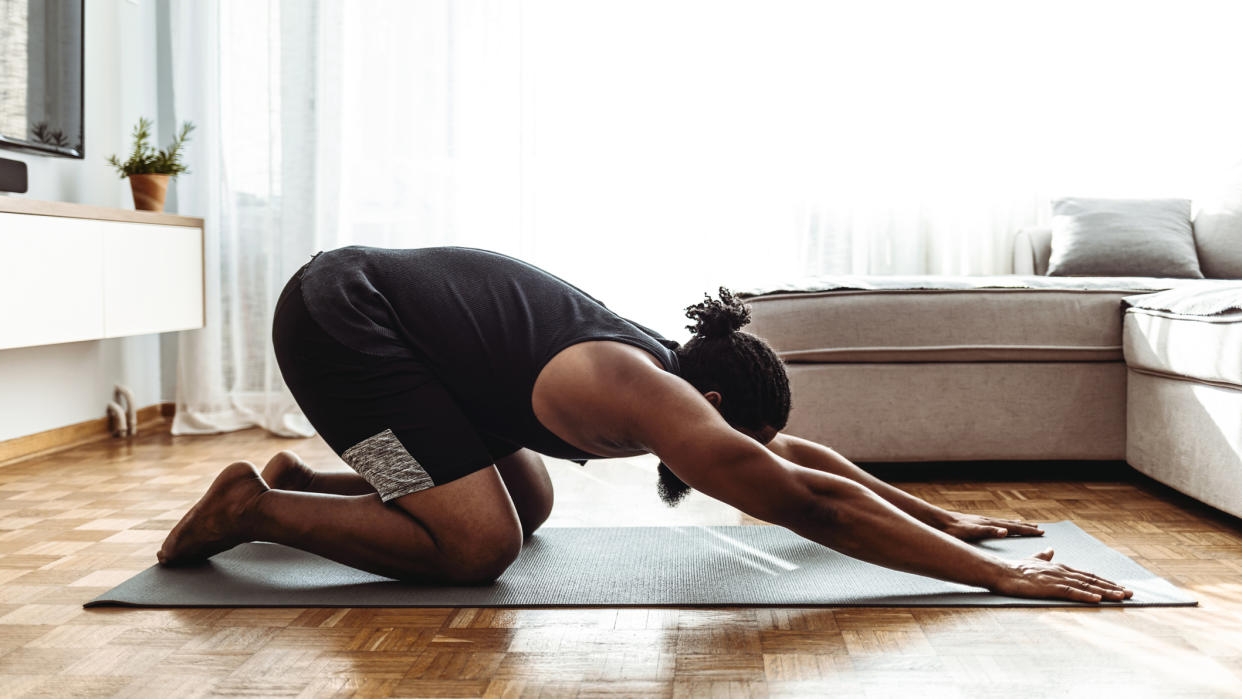
Yin Yoga is a slow-paced practice that involves holding poses for several minutes. This adds some gentle “stress” to your joints, encouraging the tight tissue surrounding them to stretch out.
According to YogaWorks instructor Tamika Caston-Miller, the biggest benefit of this yoga style is that it encourages mental fortitude; you have to be able to sit in the challenging positions for anywhere between three and 10 minutes. But that's not its only merit.
“One can also experience better mobility and an increased range of motion,” she says. “As yin is a practice of resilience, lower stress levels can be expected, as well as the ability to be less reactionary.”
To help you learn the basics of yin yoga, we asked Caston-Miller to demonstrate her top five poses. It’s advisable that you perform these stretches on a mat, as you’ll be holding them for several minutes (our round-up of the best yoga mats can help, if you don’t own this essential bit of kit.)
1. Toe squat
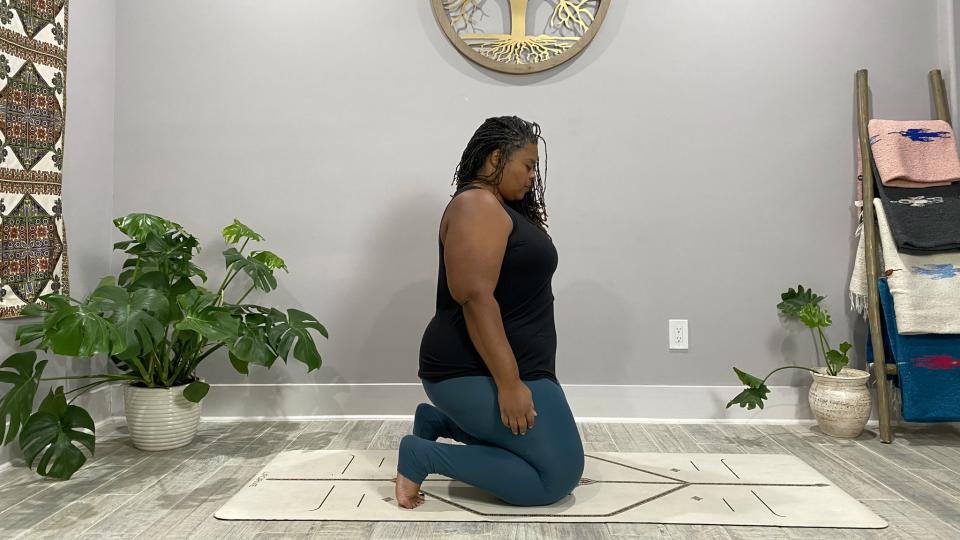
Time: 2 minutes
How to do it: From an all-fours position on the ground, tuck all 10 toes under and lean back to sit on or towards your heels. If this is too much pressure on the toes, lean forward a bit or place blocks under your hands.
“This pose is great because it stimulates all of the energetic lines in the feet,” says Caston-Miller. “It makes for a complete reset of these important body parts.”
2. Cobbler
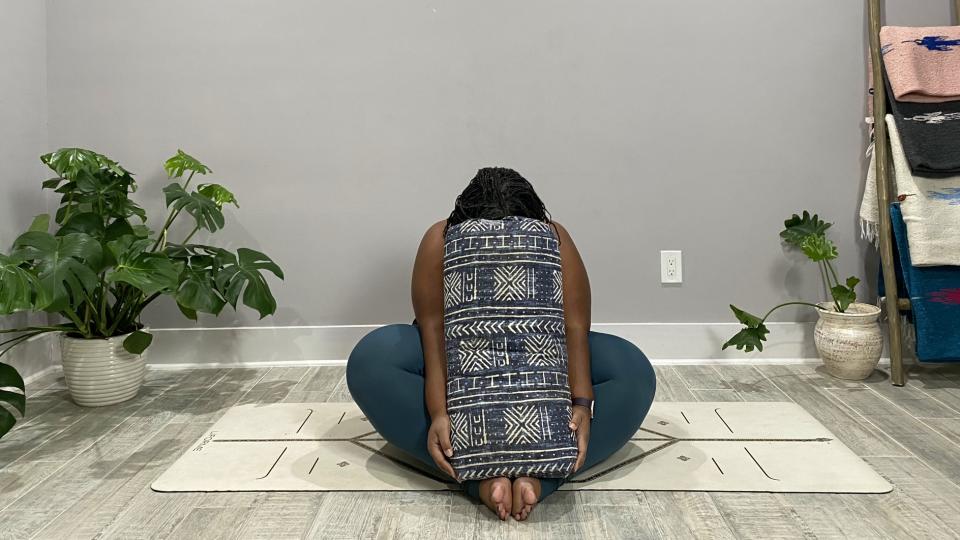
Time: 3-5 minutes
How to do it: Bring the soles of the feet together in front of you, with your knees bowed out. Fold towards the feet, as far as you can go. Feel free to bring a bolster or blocks under the forehead, if you need added support.
This posture, also known as bound angle, is a hip-opening forward bend. “It allows for the practitioner to load the hips over time while providing lower back release,” says Caston-Miller.
3. Cat Pulling its Tail
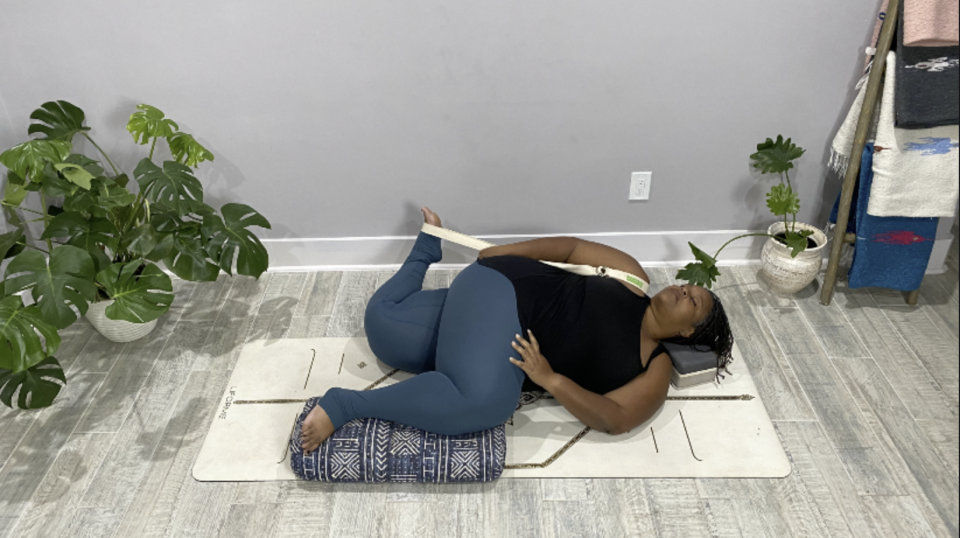
Time: 3 minutes per side
How to do it: Lie on your right side and bend both knees. Send the left leg forward and the right leg back and bend the knees, so they are at a 90-degree angle from one another. Bring the right foot into the left hand and hold. Because it can be a challenge to hold onto the foot, a strap is useful to allow for softening into the pose.
“This is a quintessential yin twist that provides a stretch along the hip flexors and IT band while back bending and twisting,” Caston-Miller says.
4. Tadpole

Time: 3-5 minutes
How to do it: From all fours, widen the knees apart and bring the toes to touch. Extend your arms in front of you, and bring the chest towards the floor.
The tadpole pose is also referred to as the wide-knee child’s pose. Caston-Miller says: “Tadpole offers a wonderful release of the lower back, and hip opening, and is a familiar shape to most people, therefore making for a great pose for beginner’s. Because yin shapes are sustained for longer periods of time, it may be helpful to place a prop under the head for those with sensitive hips.”
5. Heart Bench
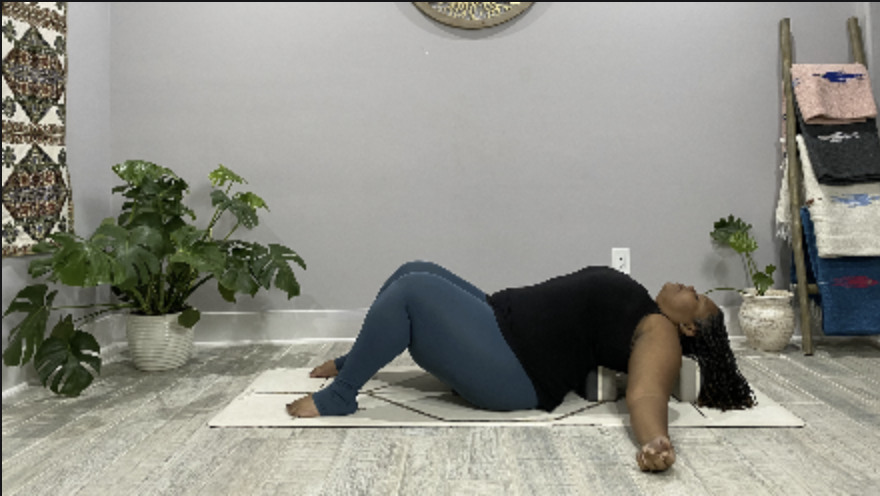
Time: 5 minutes
How to do it: Using two blocks, bring one block under the head, and the second lower down under the thoracic spine (heart). You may place the block narrowly along the spine or widely along the shoulder blades. Let the hips settle into the floor. Keep feet on the ground initially, then extend your legs if you're able to.
This shape is a variation of a fish pose. “It is an excellent heart opener that offers a stretch across the chest while keeping hip bones neutral,” Caston-Miller says.
Is yin yoga suitable for beginners?
It absolutely is, as Caston-Miller says: “New folks to the practice need to understand that yin yoga isn’t about performing or attaining shapes—it’s about building compassion for yourself and resiliency in the body and mind. They may have years of experience with other styles and find new challenges in this type of practice because they cannot rely on the strength of their muscles."
However, as Caston-Miller notes, finding the right teacher for you is important and will help your practice. “Practicing with teachers who guide poses for 3-4 minutes is a more accessible entry point than those who will guide poses for 10 minutes or longer,” she says. “Ultimately, the teacher who makes you feel cared for and seen will be the right support system for your yin yoga journey.”
Do note, those who are hypermobile should avoid the practice if they’re not performing any other strength-building practices and if they have a tendency to overstretch.
For more ways to get your yoga fix, check out these 3 beginner yoga exercises for building strength or read up on how to use a yoga block to help improve your stability, alleviate wrist pain and deepen your stretch.

